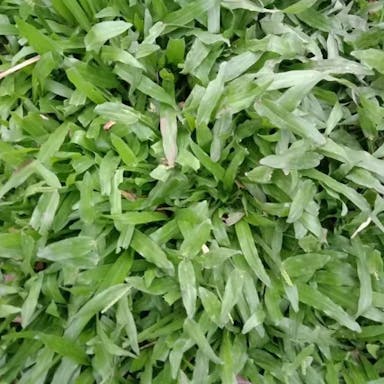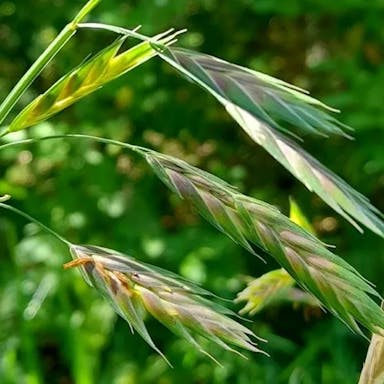Lindheimer's muhly, scientifically known as Muhlenbergia lindheimeri, is a perennial ornamental grass native to North America. This ornamental decorative grass features textured foliage with blossoms that change hues. The leafy green texture forms clusters that reach 3 to 4 feet in height. Late summer into early fall brings airy, delicate small flower groups which transition from pinkish to silver-gray tones as they develop fully. The ornamental flower panicles provide a graceful delicate artistic touch in landscape scenes. This grassy plant succeeds in hot dry sites, allowing use in minimal care or xeriscape plantings. Once established, it continues to perform well with minimal care. Often this grass gets utilized in large groupings, boundaries, or as an accent point within garden designs. The textured movement makes a popular option to add interest and motion to garden areas. Cool season flowering plants with soft pastel petals bring joy. Some types spread and naturalize to form carefree drifts. Favorite varieties appreciated by butterfly pollinators. Evergreen shrubs anchor the landscape. Blooming plants with tropical foliage for indoor growing.
Lindheimer's muhly
- Scientific name
- Muhlenbergia lindheimeri
Basic Information
- Poaceae Family Muhlenbergia Genus Lindheimer's muhly Species
- Poaceae > Muhlenbergia > Muhlenbergia lindheimeri
- 83%
- The Completeness of This Encyclopedia
Please help us complete the encyclopedia, Terrarium is a encyclopedia service to be completed with everyone in the world. Currently, this page is 83% complete. For more information on how to contribute, please click here.
- Graminoid
- Perennial
- Height
- 60cm ~ 150cm
- Flower Color
- Leaf Color
- Anthesis
- fall
- Sunlight Exposure
Full Sun Long hours of sunlight from morning to afternoon Partial Shade A location in the shade of a tree or where either the morning or afternoon is shaded Full Shade A place where there is no direct sunlight
- Full Sun
- Hardiness Zones
This is an indicator to know to which zone each plant can winter. Knowing the zone of each plant gives you an idea of the cold temperature resistance when grown in the ground without a roof. 2: -42.7 to -40.0 3: -39.9 to -34.4 4: -34.3 to -28.9 5: -28.8 to -23.3 6: -23.2 to -17.8 7: -17.7 to -12.2 8: -12.1 to -6.7 9: -6.6 to -1.1 10: -1.0 to 4.4 11: 4.5 to 10.0
- 6
- Cold resistance
- Good
- Heat resistance
- Excellent
- Habitat of origin
- United States
- Growth Rate
- Normal
What is Lindheimer's muhly (Muhlenbergia lindheimeri)?
What is Lindheimer's muhly (Muhlenbergia lindheimeri)
Flower meaning
The flower language often used in the United States for Lindheimer's muhly is: Elegance. Grace. Beauty. Appreciation. One example is
Calendar of Lindheimer's muhly (Muhlenbergia lindheimeri)
Calendar
Lindheimer's muhly typically blooms in late summer to early fall in the United States. The flowers are at their peak in September. Blooming occurs once a year, lasting for several weeks. The plant requires a period of warm weather to initiate flowering. Ensure the plant receives adequate sunlight and water during the blooming period. Deadheading spent flowers can encourage prolonged blooming. Lindheimer's muhly is a plant that thrives in well-drained soil. It is commonly found in prairies, meadows, and open woodlands. The plant is low-maintenance.
How to grow Lindheimer's muhly (Muhlenbergia lindheimeri)
Watering
A drainage resources should be employed for Lindheimer's muhly. During its growth stage, water generously once every fourteen to twenty-one days. Confirm the soil dries out thoroughly between hydrations. In the dormant period, limit hydration to once monthly or decreased frequency, permitting the soil to almost completely dry. Adjust hydration intervals contingent on settings like ambient temperature and humidity, including the plant's maturation phase. Utilize soil with excellent drainage to avert waterlogging, potentially resulting in root decay. Inspect soil moisture preceding hydration by examining the upper soil layers to circumvent overhydration. In arid, torrid climates, slightly escalate hydration frequency to accommodate the plant's water prerequisites.
Soil and Fertilizer
Lindheimer's muhly needs well-drained fertile ground. Apply balanced slow-release fertilizer in early spring. Use water-soluble fertilizer every 4-6 weeks during growing season for continuous blooming. Over-fertilizing causes too much leaf growth instead of flowers. Check soil drainage and aeration regularly. Test soil every few years and adjust fertilizer accordingly.
Sunlight and Place
Lindheimer's muhly thrives in full sun, requiring at least 6 hours of direct sunlight daily. Lindheimer's muhly should be positioned in a location where it receives ample sunlight throughout the day. Lindheimer's muhly prefers well-drained soil. Lindheimer's muhly can withstand cold temperatures down to 10°F (-12°C), but prolonged exposure to freezing conditions may damage it. During winter, it is advisable to protect it from frost.
Advanced Information of Lindheimer's muhly (Muhlenbergia lindheimeri)
Pruning
Lindheimer's muhly benefits from pruning to maintain its shape and promote new growth. A portion of the elder stems ought to be removed at the base every springtime. This assists the plant remain in good health. It is wise to clear away trimmed debris around plants. Occasional cutting back invigorates Lindheimer's muhly.
Planting and Harvest
Lindheimer's muhly is best suited for potted planting due to its adaptability to container growth. Planting in a pot with drainage holes using well-draining soil at the same depth as before allows thorough watering after planting. Full sunlight location repotting every few springs to slightly larger pots prevents overwatering and insufficient sunlight. Proper care avoids problems.
Propagation
Lindheimer's muhly can be propagated through division, cuttings, or seed sowing. For division, separate the plant into smaller sections with roots attached and replant them. Cuttings can be taken from mature stems, placed in a rooting hormone, and then planted in a well-draining soil mix. To sow seeds, collect them when ripe, sow them in a seed-starting mix, and keep them moist until germination. Using multiple propagation methods ensures a higher success rate and faster multiplication of plants. Harvest seeds when they are mature and dry for optimal propagation success.
Pests and Diseases
Lindheimer's muhly are vulnerable to irritants like spider mites and white dust, impairing advancement. Cautious watching for first markers is key. Natural cleansers can be utilized as natural control techniques. Infirmities Lindheimer's muhly are inclined to incorporate contagious contaminations like white powder and rust. These sicknesses can cause leaf staining, and at last prompt the plant's dying. To forestall contagious sicknesses, guarantee appropriate air flow around the plant, stay away from overhead watering, and eliminate any tainted plant parts fast.
Habitat of Lindheimer's muhly (Muhlenbergia lindheimeri)
Habitat
Toxicity of Lindheimer's muhly (Muhlenbergia lindheimeri)
Health Benefits
- edible
- Inedible
- Toxic
- No toxicity
NO DATA
Toxic for dogs and cats
NO DATA
Q&A of Lindheimer's muhly (Muhlenbergia lindheimeri)
- Is there a recommended way to choose?
Lindheimer's muhly has many types, like 'Autumn Glow' having reddish flowers, 'White Cloud' with white flowers, and 'Regal Mist' with purple flowers. When picking young plants, choose ones with good green leaves and strong roots. For seeds, select full, hard ones with no damage or mold. Make sure young plants have no pests or diseases, and seeds are from good sellers. Focus on types that fit your weather and soil for good growth. Do research on care needs for each type to ensure best development. Don't forget to observe the planting season. Protect it from diseases in spring and fall. Plant it in porous soil mixed with compost. Water when topsoil gets dry. Flowers last longer in full sun. Grow it in borders or as a garden accent. Clip spent blooms to encourage reblooming. Divide clumps in spring or fall.
0
0
- What are the ornamental features and landscaping uses of Lindheimer's muhly grass?
Lindheimer's muhly grass, scientifically known as Muhlenbergia lindheimeri. It has pretty features. The leaves are tall and thin. They are blueish-green. The flowers are silvery blue. They bloom late in summer and fall. So this plant is nice for landscaping. It looks good in groups. Or it can go along borders. Or use it to highlight other plants. It can live with little water. And it grows in different kinds of soil. So it is good for xeriscaping. It looks nice even in winter. The dried seed heads last. Wildlife like it too.
0
0











